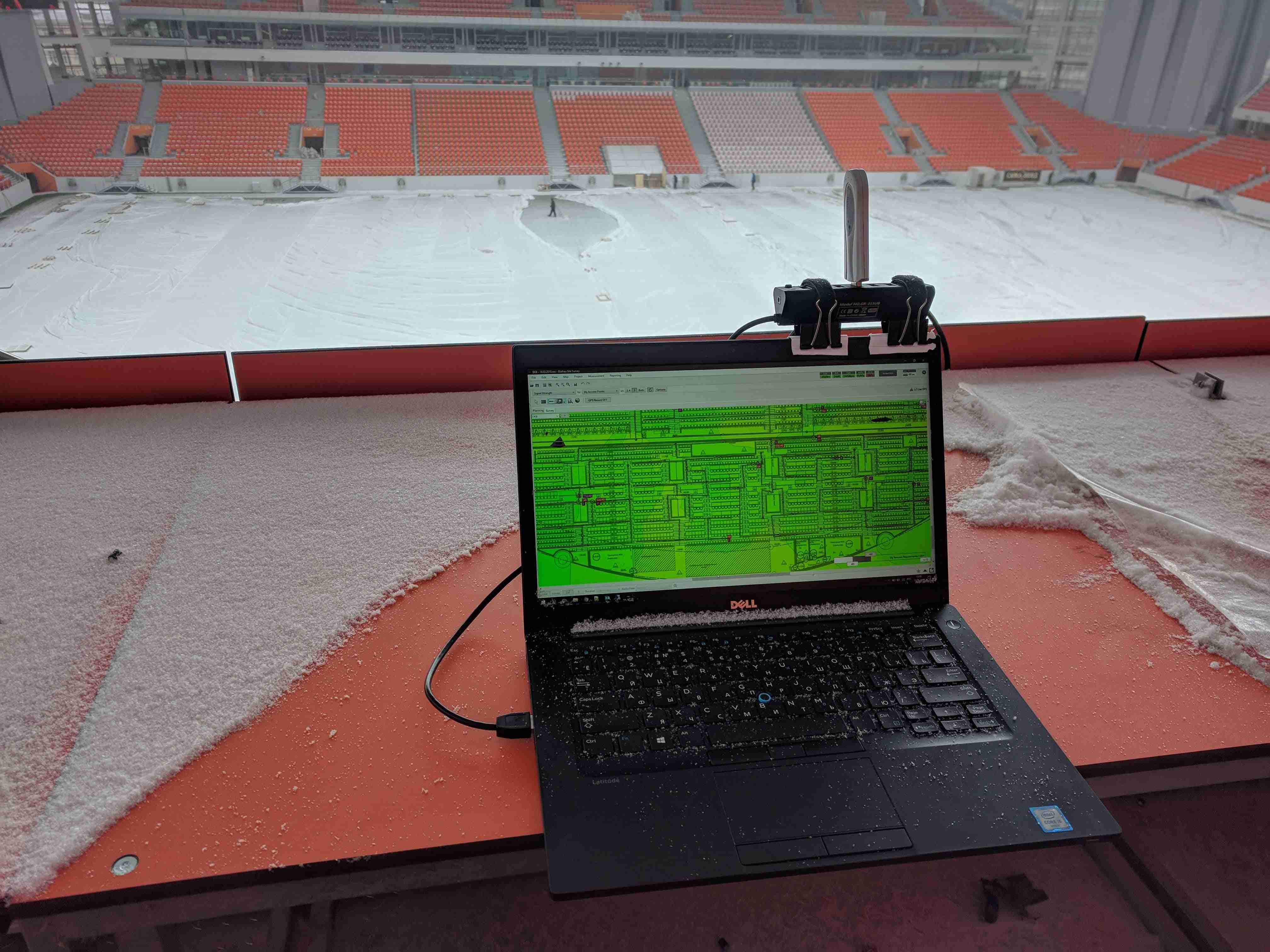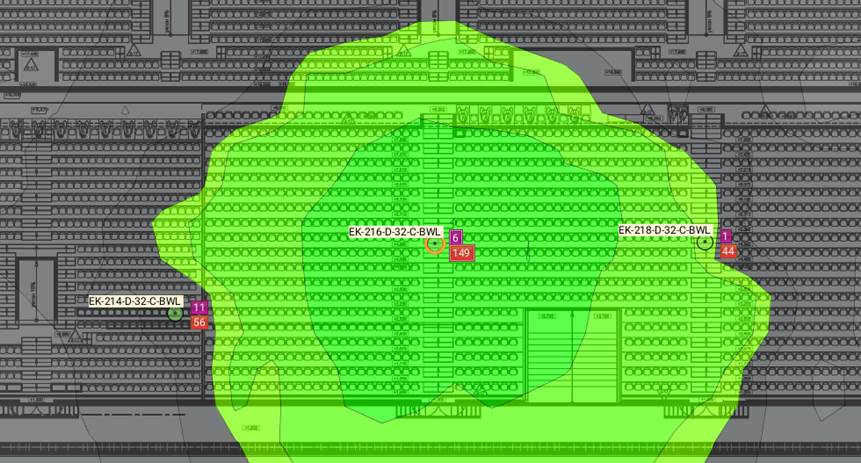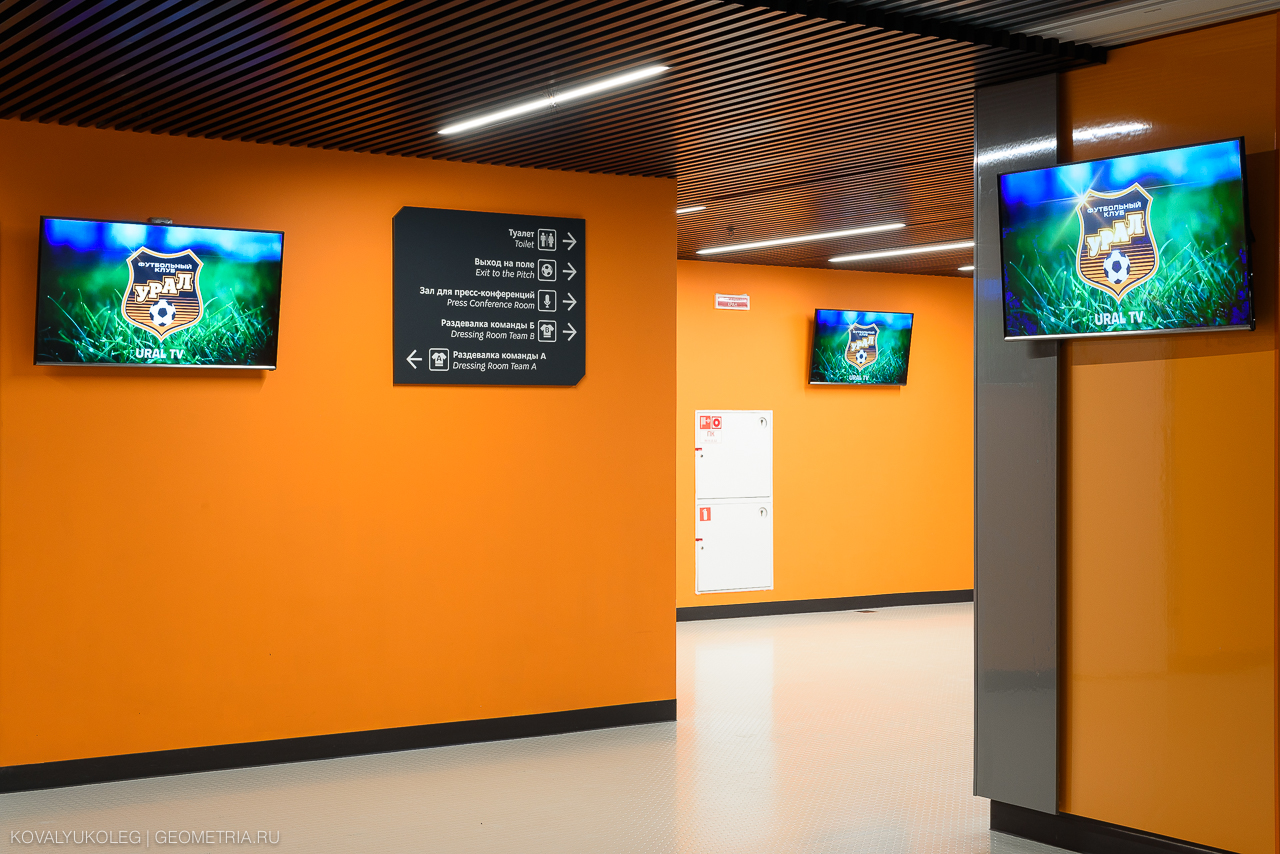Telecommunications stadium "Yekaterinburg Arena": 20 kilometers of thick cable

In order to show live football, you need professional equipment. Alas, in the television field it is mostly analog. This means that the signalmen at each stadium are waiting for a real paradise. Provided, of course, that you like to carry a heavy cable and bend a thick coaxial.
In the case of the Central Stadium in Yekaterinburg, there were a lot of coax. Lots of.
Throughout the facility are TV boxes. Television men come, open the box, and there are optical connections and triaxial - they stick in and transfer their content to the mobile station. A mobile station is a car with duplex satellite communications somewhere outside the stadium bowl. He arrives, opens on the perimeter, guys come out from there, for example, from Match TV, connect to a TV box, and football flies through the air to all the TVs in the country. There is a hardware room that can redirect this to a conference room, a press center. There are veins throughout the stadium, there is just a crazy amount of cable mass.
Wi-Fi infrastructure
According to FIFA requirements, fans at the stadium must be given access to the Internet - well, for example, to post a selfie. Moreover, rather fat selfies: 15% of visitors to the Yekaterinburg Arena should have at least 2 Mb / s for each range available to the user. That is, with a stadium capacity of 45 thousand people, the network should be designed for 6,750 simultaneous connections.

Optics are relatively easy to do; local providers do this. But to distribute all this on the air is already a task. We need special antennas, radio frequency inspection and many other works. In Krasnodar, we already did this on Tsiska, and here we implemented it on Extreme Networks (not so long ago, a vendor bought an Avaya network part). 35 thousand spectators in the stands (including temporary) - this is a total of 90 access points in the bowl, and 270 in total in the stadium.
Externally narrow antennas cover the stands with fans. Here it was not necessary to drown communications in concrete at the project stage, and the requirements for aesthetics did not imply masking the emitters, so to some extent the project turned out to be simple in coordination with subcontractors. But, as it usually happens, not without tales: in some places other comrades stood on our brackets, in some places local contractors painted everything that they saw, including our emitters along with moving elements.
Points were also hung simply, despite the height of 30 meters. There was access, on top of a fenced engineering site. No promp was needed, the stadium is very thought out in terms of service.


Integrated all this with the Rostelecom portal, which provides authorization via SMS and Fan ID (fan ID), this is a single portal for all stadiums.


The results of the radio survey after the launch of the WLAN in Ekahau Site Survey software. The signal level generated by one of the points with a narrowly directed antenna covering the stands is shown.
Screens
On the outer perimeter there are 2 double-sided screens 6.7 x 3.8 meters. This size is selected according to FIFA requirements.

In a bowl 2 screens 18 x 10 meters, this is an LED video wall from the cabinets. The quality is high, the contrast is good, the benefit of the new generation of LEDs makes it possible - there are goals with an increase, and replays, and broadcast in real time. During the championship, another 300 monitors are installed on the rostrum of the media so that journalists can watch the picture almost without delay - special equipment is used to reduce this delay.

Inside the stadium around its entire perimeter (under-stands), as well as in the bar, VIP-boxes, interview areas, team locker rooms, coaches, etc. 250 monitors are installed: according to FIFA requirements, even if you go behind a cracker, you can not miss a goal. Usually, IP-TV from the match is spinning there, but there is a centralized content management system, that is, you can put any content from the local operator room for the stadium channel. Though advertising, even repetitions.
For some of the screens, we mounted special anti-vandal thermo-protective covers, they maintain the necessary temperature: in winter they protect against cold, in summer - from overheating.

For the media

From all points, of which there are about 30 throughout the stadium, calls are made to this separate stand. Broadcasters are taking the signal from here, connecting to it.
The head station - television chassis, where capture cards are inserted. These cards process the signal with minimal delay (they pass through themselves in 70 ms), there is a coaxial line with a thick core so that there are no losses.
The second source of delays is the TV. The manufacturer issued specialized firmware to reduce latency specifically for sports. At all stadiums, the vendor did this thing.
We also equipped the press center with telecom equipment. There is a multimedia complex that allows you to conduct events before the match and after it. Information display facilities, congress system, sound reinforcement, Wi-Fi, lighting and so on.

Sound reinforcement system

This is where the sound reinforcement system is controlled, which is designed to provide a sound pressure of 116.9 dB according to FIFA requirements (it is precisely this pressure that will allow “shouting” the cry of the crowds of fans).
The architects decided acoustics late, so the lining went with it. Firstly, by the time of its laying everything had already been buried, it was necessary to mount it separately. By the way, while we were mounting, the security service was watching us from all the nearby bushes: a special communications point cable was passing by, the guard had orders to report even in small details about any atypical situation. I personally heard the negotiations: "First, two dogs wrote on the ballot boxes, as I understand it, the reception!"
It was interesting to install the LAN, because the subcontractors did not understand within one of the premises that the project was new, and they laid the cable according to the old version. There were moments where you had equipment in the project, and the electrician was not laid. On one of the structures there was no access and no way out - I had to think through it, because the walled-up structure, of course, is interesting, but not very funny.

For a very long time and painstakingly approached the issue of equipment selection, the difficult process of coordinating all the loads on the ring and all structures was going on. During fire extinguishing, the warning system is automatically silenced, and fire extinguishing has its own warning.

First Wi-Fi was installed (external points for the stands). They were hung in the summer, and when the acoustic clusters were installed in the winter, they blocked access to Wi-Fi points in direction, they had to be moved a little later.

Sound reinforcement system and Wi-Fi access points

Sound system at the external perimeter
Miscellaneous
At the first serious match on April 15 of this year between Spartak and Ural, subcontractors, without agreement, made a small diversion several hours before the match. They put a closed LAN network segment. They tried to expand the video surveillance channel on the day of the events and began insanely poking cables. We have held large-scale events more than once and we know that on the day of the event nothing can be touched. Even presetting - in a day. Two hours before the match, everything stopped working for them, so they started to mock the system. My colleague Vyacheslav saved them.
Once, when checking for fault tolerance and backup systems during an event in the conference room, power was lost everywhere except for this conference room. I don’t know, lucky or not lucky.
We completely did technical support for the first match. And the LAN, and scoring, and monitoring - everything was done by our engineers. Worked out well.
Here is a post by my colleague about the engineering subsystems of this stadium . But about the sound at the Spartak stadium . My mail: ACherednik@croc.ru.
